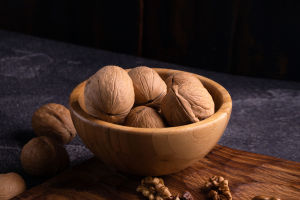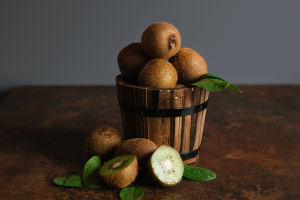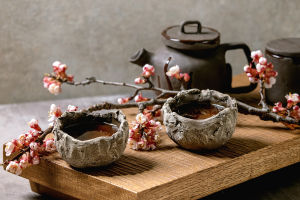We might toss a handful into a pan or sprinkle it over a dish, but few of us stop to think about where it comes from, how to grow it right, and what exactly makes it so special.
Today, we’re diving into the fascinating world of coriander seeds—yes, those tiny round seeds that come from the plant many of us call cilantro. Let's explore how to grow it successfully in summer, how to care for it, and what it brings to the table, both in the kitchen and in traditional remedies.
What does a coriander seed actually look like?
Coriander (Coriandrum sativum L.) is a small herb in the carrot family that grows to about 10 to 20 inches tall. Its leaves are delicate and divided—lower leaves are broad and deeply lobed, while upper leaves are thinner and more finely cut. The flowers bloom from late spring to early summer, and they’re either white or pale purple, forming umbrella-like clusters.
When it comes to seeds, coriander produces nearly round fruits about 3–5 mm in diameter. These seeds are actually two tiny fruit segments fused together. Their surface is slightly rough with alternating fine and prominent ridges. When crushed, they release a strong, distinctive aroma—kind of citrusy and spicy at once. The flavor is mildly peppery with a hint of warmth.
Where is coriander from, and where do we grow it?
Coriander originally grew along the Mediterranean coast, but it has spread far and wide. Today, we grow it all over the world. In places like China, India, and parts of Southeast Asia, it's a regular part of home gardens and large-scale farming alike.
How do we grow coriander in the summer?
Summer cilantro farming needs some planning, but the payoff is big. In fact, just one 667-square-meter field (about 1/10 acre) can bring in over $400 worth of produce.
Here’s how we can grow it effectively:
1. Choose the right seeds: Go for heat-tolerant, slow-bolting varieties that grow fast and have a strong aroma.
2. Prepare the field: Pick a spot with rich, well-drained soil. Make sure it’s not been used to grow cilantro in the last five years to avoid disease. Add about 4,000 kg of decomposed compost and 100 kg of oil cake fertilizer per acre.
3. Soak and sprout the seeds: Before planting, soak seeds in clean water for 24–30 hours, then wrap them in a damp sackcloth for a few days to let them sprout. Keep the temperature around 68–77°F (20–25°C).
4. Sow at the right time: In places like Shandong or Henan, the best time to sow is from late April to early June. Sow every 5–7 days for a steady harvest. Cover seeds with 2 cm of soil and lightly press down.
5. Water and shade: After sowing, water thoroughly. As seedlings grow, thin them out to 2–4 cm apart. In the hot south, shade the plants later in summer with mesh or simple shelters to prevent burning.
How do we care for cilantro once it’s growing?
When the seedlings are 4–5 cm tall, we should thin them out and remove weeds. Water regularly and lightly, keeping the soil moist. Every 7–10 days, or after each harvest, we can apply liquid compost diluted in water to help the plants grow back quickly and healthily. Shade is crucial in high summer—think simple nets or lightweight covers.
When should we harvest it?
We don’t have to wait for all of it to mature at once. Cilantro can be harvested in batches. In the early stage, pull out the smaller ones while thinning the rows. Later, use a small, sharp tool to cut them cleanly. After each harvest, apply more water and nutrients to help the next batch grow quickly.
What about pests and diseases?
Cilantro is fairly resistant, but we still need to watch for damping-off in seedlings and anthracnose or leaf spot in mature plants. Spray with diluted oxygen-rich agents every 7–10 days for prevention. To prevent virus-carrying aphids, we can use insect-proof netting and spray the leaves with diluted imidacloprid. Always provide some shade to reduce stress.
What makes coriander seeds useful beyond the kitchen?
Coriander seeds aren’t just for flavoring. In traditional herbal use, they’re believed to support digestion, relieve bloating, and even help with blood sugar control and immune support. Just a few seeds can be brewed into a tea or used as a seasoning, adding not only flavor but also potential health benefits. But like all things, moderation is key.
Let’s harvest the best from this little seed
From its fragrant leaves to its round, aromatic seeds, coriander gives us so much with just a little care. We can grow it in our summer garden and enjoy the process of watching it thrive. We can also bring its warm, spicy flavor into our kitchen by using the seeds in everyday dishes. There’s real joy in understanding where our herbs come from and learning how to grow them with our own hands.
What about you, Lykkers?
Have you ever grown coriander at home or used its seeds for something more than just cooking? Let us know your experience or questions—we’re always excited to hear how you bring plants like this into your daily life!
How to Grow and Harvest Coriander (Cilantro Seeds)
Video by JimmyB Harvests







